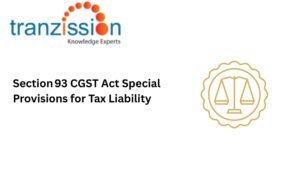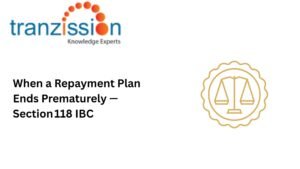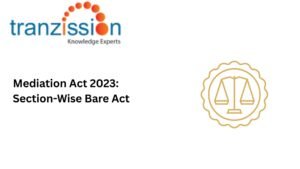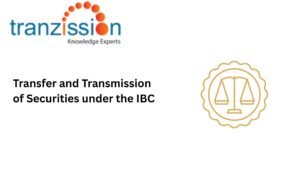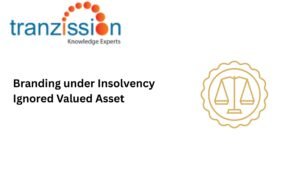
Legal Perspective: Personal Insolvency under IBC
Table of Contents
Insolvency and Bankruptcy Code, 2016 incorporates personal insolvency processes for resolving the financial distress of individual debtors in a structured and time-bound resolution. The most common form of personal insolvency under IBC is bankruptcy, however this is not ideal for any individual as debtors are working towards reviving, restructuring, or rehabilitating themselves.
Understanding Personal Insolvency under IBC
Personal insolvency under the IBC relates to corporate debtors and guarantors who are unable to repay their debts in the Insolvency and Bankruptcy Code, 2016 (hereon forward known as “IBC”). This framework provides uniformity and brings a consolidated system for conducting insolvency and bankruptcy for individuals and guarantors.
Pre-Amendment Position on Personal Guarantors
In the case State Bank of India v. Ramakrishnan the question was whether section 14 of IBC should apply to personal guarantors as well. The Supreme Court held that the moratorium period applies only to the corporate debtors and not the personal guarantors. In Vishnu Kumar Agarwal v. Piramal Enterprises Ltd, the relevant issue to personal guarantors is: whether corporate insolvency resolution process (CIRP) can be initiated against a corporate guarantor, if the principal borrower is not a corporate debtor or corporate person, he National Company Law Appellate Tribunal (NCLAT) held that the CIRP,could be initiated against a corporate guarantor without initiating CIRP against the principal borrower. Under State Bank of India v. Athena Energy Ventures (P) Ltd., the NCLAT permitted the concurrent initiation of CIRP against the personal guarantor and principal borrower.
Key Provisions and Judicial Interpretations & Rulings related to personal guarantors
The Ministry of Corporate Affairs (MCA) notification on 15th November, 2019 established the 2019 Amendment that the following IBC provisions be applicable to personal guarantor’s as well:
- Section 2(e), which states that the IBC is applicable to personal guarantors of corporate debtors.
- Section 78 and 79, include that the application of Part III, which is fresh start, insolvency and bankruptcy of individuals and partnerships where the minimum default is Rs. 1000 and the definition clause of this Part, respectively. However, according to the MCA notification, fresh start process is not included in this Amendment.
- Section 239(2) clauses (g) to (i), under which the Central Government can prescribe the form, time limit, and manner of submitting information or documents to the insolvency professionals, or any other matter which is required or prescribed.
- Section 239(2) clauses (m) to (zc), which gives the the Central Government power, through notification, to prescribe the form, manner of proof, fee, other information, documents, debt, etc
- Section 240(2)(zn) and (zs), the Insolvency and Bankruptcy Board of India (IBBI) has the power, through notification, to details and documents required to be submitted under 95, manner and form of proxy voting, fee charged
- Section 249, which states that the Recovery of Debts due to Banks and Financial Institutions Act, 1993 shall be amended in the manner specified in the Fifth Schedule.
In Lalit Kumar Jain v. Union of India, affirmed the constitutionality of the Amendment. The Supreme Court established the legal standing of the personal guarantors under the IBC. In this case the court stated that the guarantors were released from liability.
Impact of Supreme Court Rulings on Personal Guarantors
In the case of State Bank of India v. V. Ramakrishnan and the Committee of Essar Steel India Limited v Satish Kumar Gupta, the Sc that the approval of the resolution plan does not discharge the liability of the personal guarantor, however it does permit creditors to continue recovering any outstanding amounts from the guarantor. The SC in Lalit Kumar Jain v. Union of India has further upheld that the approval of the resolution plan does not ipso facto discharge the personal guarantor under the contract of guarantee as per the language of section 31 of IBC. In the case of Surendra B. Jiwarjika v. Omkara Assets Reconstruction Private Limited on 9 November, 2023, the SC reaffirmed previous rulings and the 2019 Amendment, providing more clarity of personal guarantor’s liability under the IBC.
Practical Implications and Unaddressed Issues
The 2019 Amendment and supreme court rulings, have made a significant shift in evolving insolvency law, however this also raises certain implications and unaddressed issues, particularly for personal guarantors and lenders.
- For personal guarantors, their personal assets can now be attached in liquidation to satisfy the corporate debts. This may cause individuals to deter from offering personal guarantees, which in turn impacts small businesses which rely on personal guarantors for securing loans.
- For lenders, they approach personal guarantors for recovery of debt when corporate debtors face insolvency or liquidation, hence the recovery prospect increases. Therefore, financial institutions have a mechanism in place which mitigates losses from bad debts.
- By including personal guarantors under IBC, the objective of improving credit flow and financial stability is fulfilled. The amended provisions ensure that personal guarantors cannot evade liability, resulting in more responsible borrowing and lending culture. Although, these provisions fail to consider the hardships that may be faced by personal guarantors of small and medium enterprises.
Framework for Personal Insolvency under IBC
There are two part to personal insolvency under IBC:
- Fresh Start Process: The fresh start process (FSP) is under Chapter II, Part III of IBC. FSP aims at individuals with low income and assets, enabling them to start afresh without the burden of unmanageable debt.
- Insolvency Resolution Process: The insolvency resolution process IRP) is under Chapter III, Part III of IBC. As per section 78 states that this Part is applicable to the insolvency and bankruptcy of individuals and partnerships where the amount of the default is not less than Rs 1000. The Central Government can specify that the minimum amount of default can increase to Rs. 1 lakhs by notification.
Read more: Offences and Penalties under IBC, 2016
Fresh Start Process
Under section 80 of IBC, a debtor personally or through a resolution professional (RP) is eligible to make an application in respect of his qualifying debts to the NCLT, if:
- the gross annual income of the debtor does not exceed Rs. 60,000
- the aggregate value of the assets of the debtor does not exceed Rs. 20,000
- the aggregate value of the qualifying debts does not exceed Rs. 35,000
- he is not an undischarged bankrupt;
- he does not own a dwelling unit, irrespective of whether it is encumbered or not;
- a fresh start process, insolvency resolution process or bankruptcy process is not subsisting against him
- no previous fresh start order under this Chapter has been made in relation to him in the preceding 12 months of the date of the application for fresh start
Procedure of FSP:
The FSP is initiated under section 80 when an application is filed by the debtor personally or through a resolution professional (RP) as per section 80 of IBC. Once the application supported with an affidavit is filed, an interim moratorium period commences of the date of filing the application and ceases to have effect on the date of admission or rejection of this application
Once the The RP is appointed by the Adjudicating Authority, the National Company Law Tribunal (NCLT), within 7 days of the date of receipt of the application. After the RP examines the application as per section 83 of IBC, and then submits a report to the NCLT recommending either acceptance or rejection within 14 days from the date of submission of the report and sends a copy of the report of the debtor.
If the NCLT admits the application, the interim moratorium ends, and passes an order which states the amounts accepted as qualifying debts or other amounts eligible for discharge for fresh start as per section 92 of IBC. If the application is rejected, the NCLT passes an order as it deems fit and within 7 days should send a copy of the order and a copy of the applications to the creditors.
Insolvency Resolution Process
A debtor who commits a default personally or through a RP, submit an application to the NCLT for initiating the insolvency resolution process. Under section 94(4), the following debtors are not entitled to make an application under this section, undischarged bankrupt, undergoing a fresh start process, undergoing an insolvency resolution process, or undergoing bankruptcy process, or as per section 95(5), if an application under this Chapter regarding the debtor during the period of 12 months preceding the date of submission of the application. A creditor may also make an application to initiate insolvency resolution process as per section 95.
Process for IRP:
Once an application for initiating the IRP, the RP is appointed by the NCLT. The RP examines the application and within 10 days should submit their report with any recommendations to the NCLT. The NCLT may approve this report and it will be treated the same as that of FSP. The NCLT will either admit or reject the application within 14 days from the date of submission of report as per section 100. If the application is rejected by the NCLT and send a copy of the report to the debtor or creditors, as the case may be.
On admission of the application, the moratorium period will commence and it shall cease to have effect at the end of 180 days with the date of admission of the application or on the date the NCLT passes an order on the repayment plan. The NCLT shall also issue a public notice under section 102 within 7 days of passing of this order inviting claims from all creditors within 21 days of such issue. The creditors should prepare the list of creditor within 30 days from the date of the notice The debtor then shall prepare while consulting the RP a repayment plan containing a proposal to the creditors for restructuring his debts or affairs. The RP then submits the repayment plan under section 105 with his report to the NCLT within 21 days from the last date of submission of claims. The RP then issues a notice calling the meeting of creditors at least 14 days before the date fixed for such meeting. As per section 111, the creditors approve the repayment plan by more than 3/4th in value of the creditors present. The NCLT shall pass an order approving or rejecting the repayment plan under section 114 on the basis of the report of the meeting of creditors submitted by the RP. As per section 119(1), the NCLT may pass a discharge order upon the repayment plan.
Role of Resolution Professional
In Fresh Start Process and Insolvency Resolution Process:
- Assisting the debtor in preparing the application and the repayment plan, for instance under section 106(b) and 106(f) of IBC.
- Verifying creditors claims under section 102(1)(b).
- As per section 105, the RP has a role to supervise the implementation of the repayment plan
- Ensuring the compliance with the IBC while protecting the interests of all stakeholders, referencing to section 102(1)(c).
Impact on Personal Guarantors
- In insolvency matters of individuals and firms the NCLT shall be the Debt Recovery Tribunal (DRT) having territorial jurisdiction over the place where the individual debtor actually and voluntarily resides or carries on business or personally works for gain and can entertain an application under IB as stated under section 179.
- Under section 82(1) and section 97(1) of IBC, the NCLT directs the IBBI to appoint the RP within 7 days of the application.
- Under section 98(8), the NCLT may give directions to the IBBI to appoint the RP.
- The NCLT has an important role in admitting or rejecting the application for initiating the fresh start process or insolvency resolution process.
- During the insolvency resolution and liquidation under section 60(1), the NCLT has territorial jurisdiction over the place where the registered office of the corporate person is located.
Legal Implications
Mention How does the IBC ensure that PGs cannot evade their obligations even when the corporate debtor defaults
- Personal guarantors can be held liable along with the corporate debtor
- The repayment of the corporate debtor may include provisions for dealing with the personal guarantors liability
- The connection between corporate debtor and personal guarantors ensure the comprehensive resolution and prevents guarantors from eluding their obligations.
Legal and Judicial Landscape
Indian courts, particularly the Supreme Court, interpreted the provisions of the IBC concerning personal guarantors (PGs), reflecting the distinctions between PGs and corporate debtors. Taking for instance, the SC in Lalit Kumar Jain v. Union of India, that clarifies the liability of PGs under the IBC. PGs, including promoters and directors, are now within the scope of IBC and held that the liability of a PG is not discharged simply simply because the principal debtor liability was discharged. The NCLAT in the State Bank of India, Stressed Asset Management Branch v. Mahendra Kumar Jajodia, held that the proceedings against a personal guarantor under Part III of IBC can be initiated by a creditor without any pending corporate insolvency resolution proceedings or liquidation proceedings against the corporate debtor. This judgment was challenged before the SC and the Role of NCLAT judgment was reaffirmed.
Challenges and Criticisms
The insolvency processes under the IBC has been streamlined or simplified, but there are still challenges, particularly in personal insolvency under IBC, faced by not only litigants but by other parties during the insolvency process:
- There is a lack of awareness about personal insolvency under IBC which leads to inadequate access to professional advice and insolvency practitioners is limited to rural areas.
- As there is an increase of stakeholders in personal insolvency under IBC, this increases the procedural requirements which results in delays and complexities.
- The NCLTs, NCLATs, and DRTs have the burden of innumerable cases which affects the timely resolution of personal insolvency under IBC cases.
- Small businesses and personal guarantors are negatively impacted by the economic shifts, further leading to financial instability and social repercussions.
Comparative Analysis
| Difference | India | US | UK |
| Governing Law | Insolvency and Bankruptcy Code, 2016 | Chapter 7 and Chapter 13 of the Bankruptcy Code | Insolvency Act 1986 |
| Objective in personal insolvency under IBC guarantee | Balance creditor interest | Balancing consumer and business debtor right | Focus on consumer debt |
| Do debtors get a fresh start? | Yes | Yes | Yes |
Future Prospects
- By simplifying the application resolution process, accessibility and efficiency while strictly adhering to the timelines under the IBC.
- Awareness and accessibility can be increased through educational campaigns and can encourage more individuals to use this process.
- By strengthening the capacity of NCLTs, NCLATs, and DRTs can guarantee cases being completed within the specified time frame.
- Using technology in routine and tedious tasks such as managing files, claims, and communication can reduce the procedural delays and improve transparency.
Conclusion
With the establishment of the 2019 Amendment and rulings thereafter, the recovery mechanisms for creditors have improved. On the other hand, personal guarantors assets are now liable to be attached during insolvency or bankruptcy proceedings. This dissuades individuals from being guarantors of the corporate debtor, particularly those of small businesses. This negatively affects the credit system. Therefore, there is a requirement for safeguarding the interests of personal guarantors to improve the credit system and avoid any imbalance throughout the insolvency and liquidation process.

